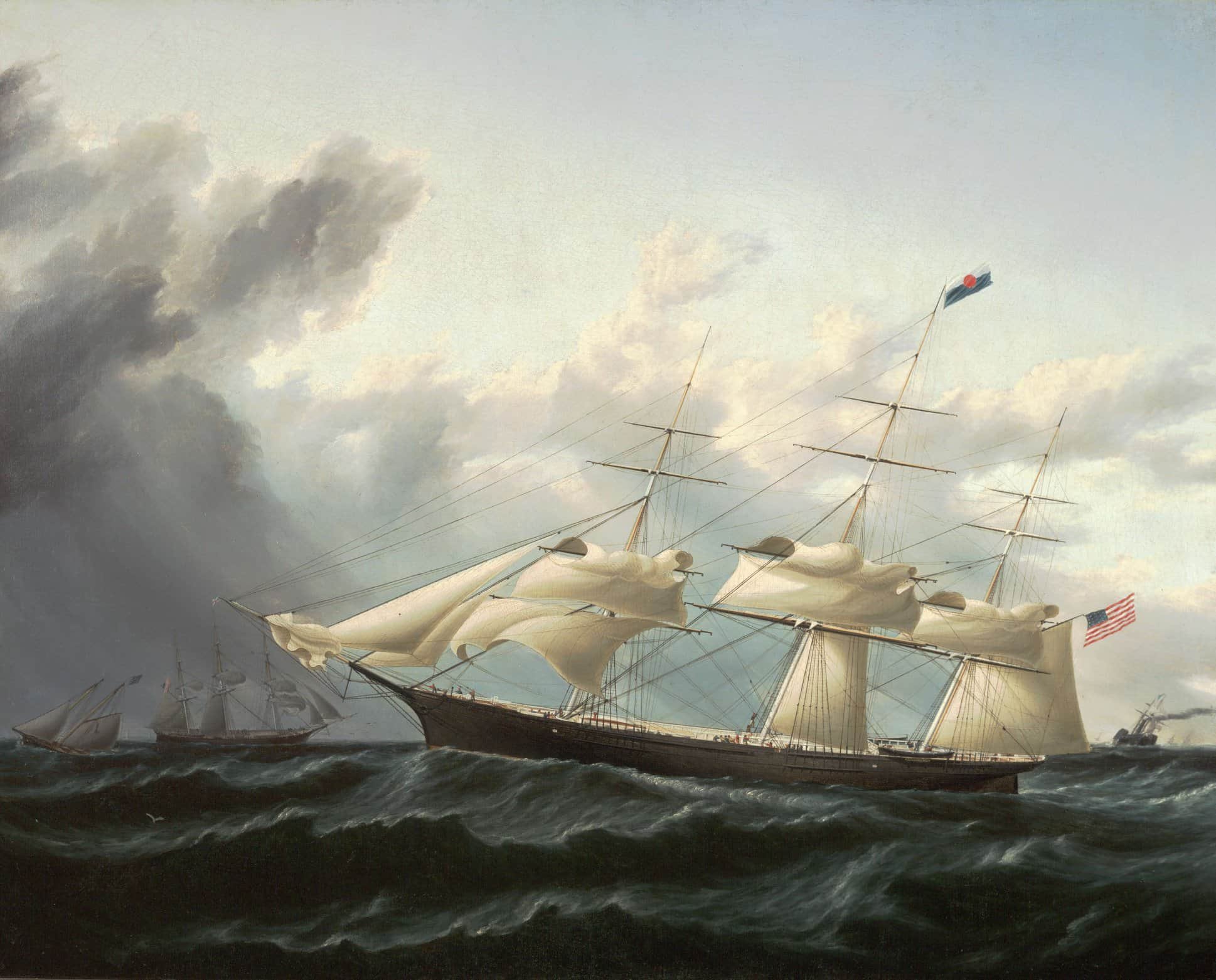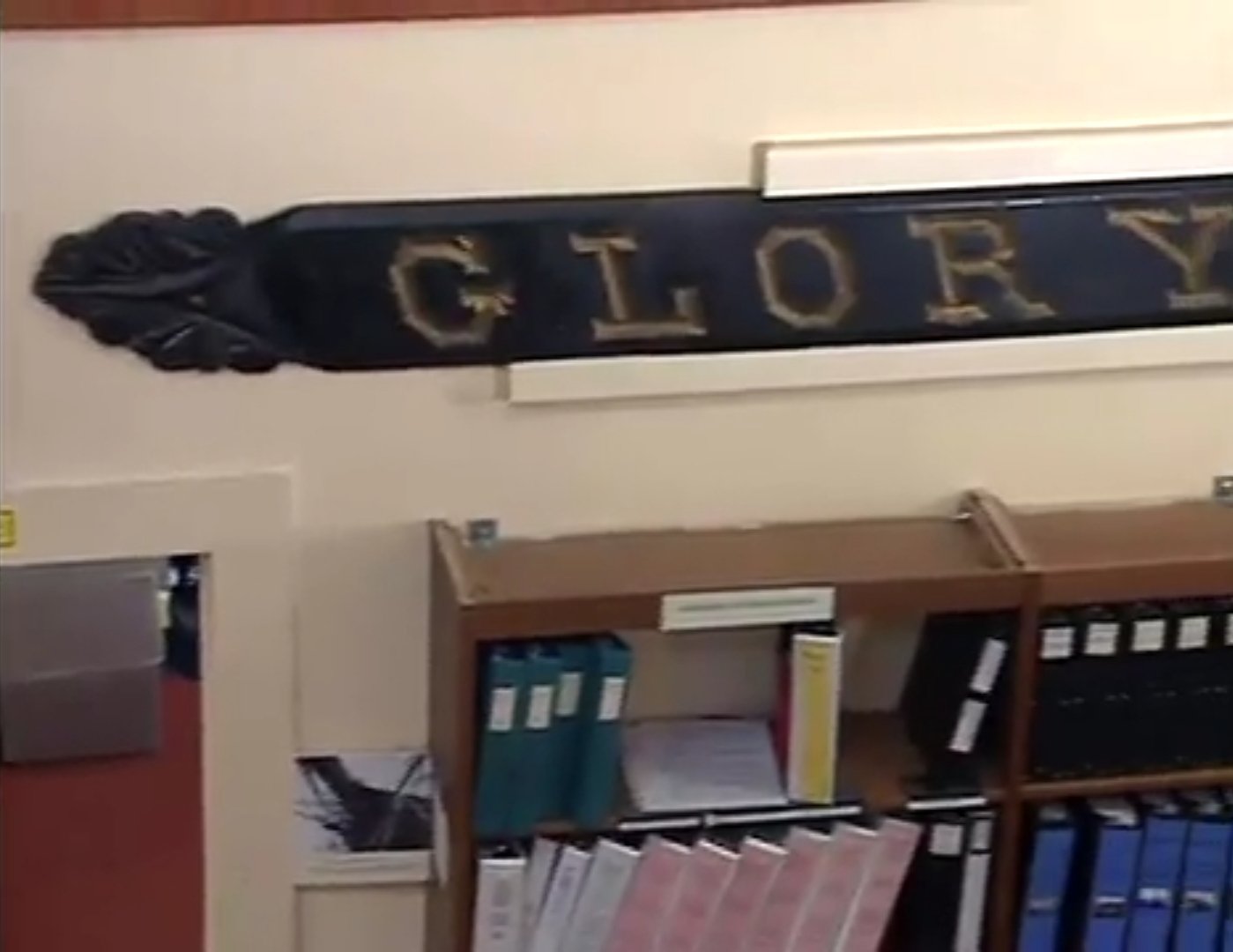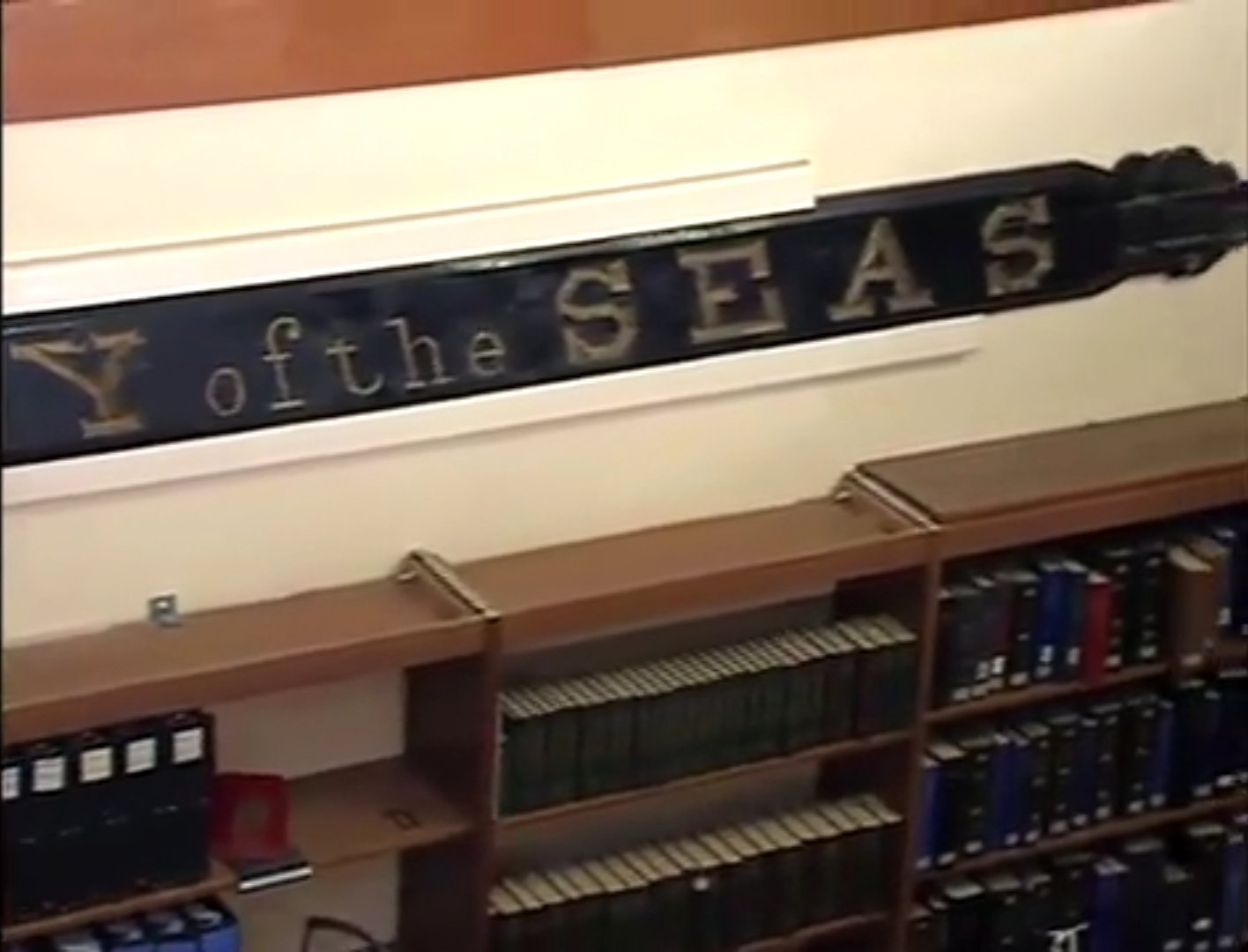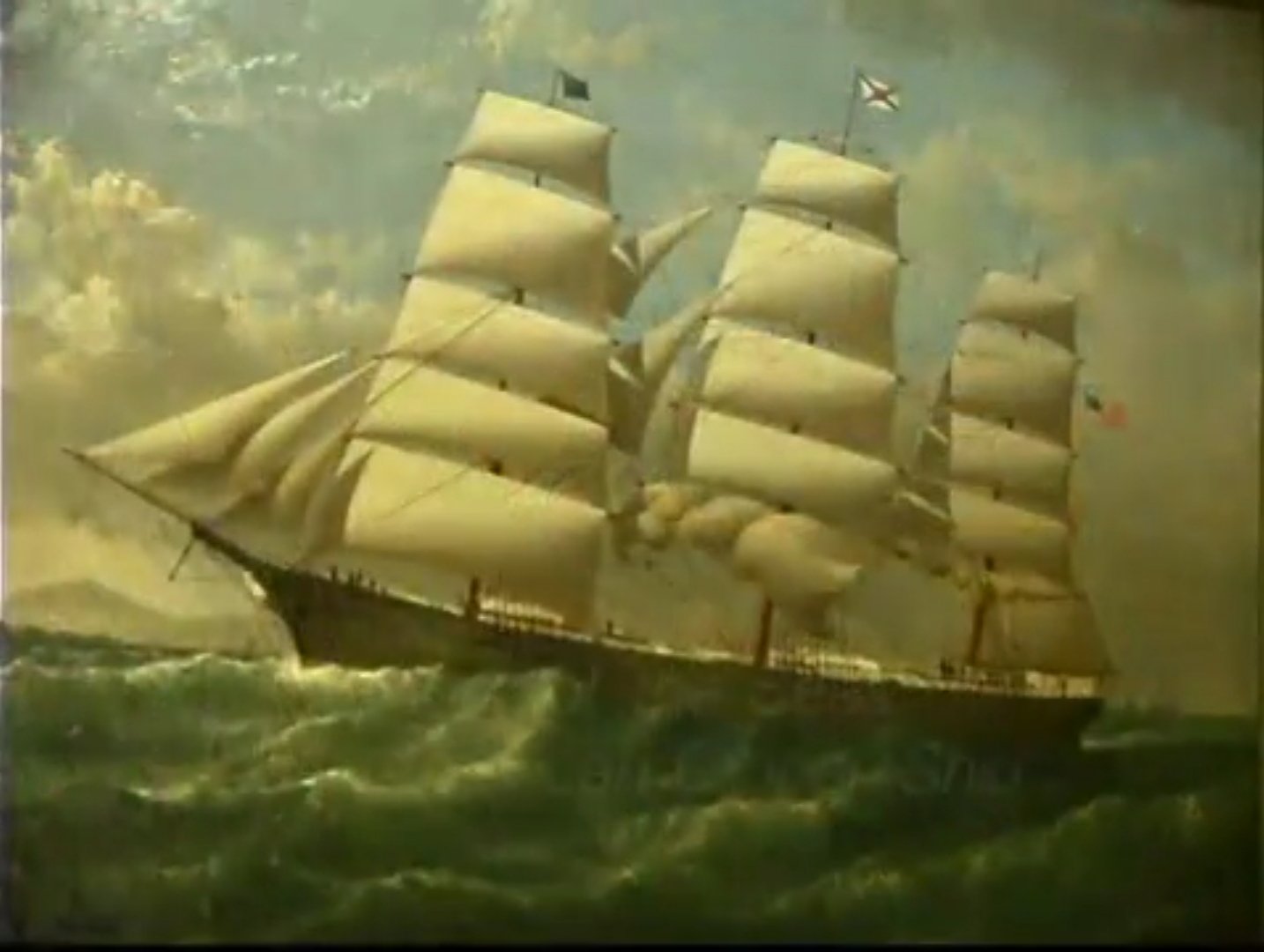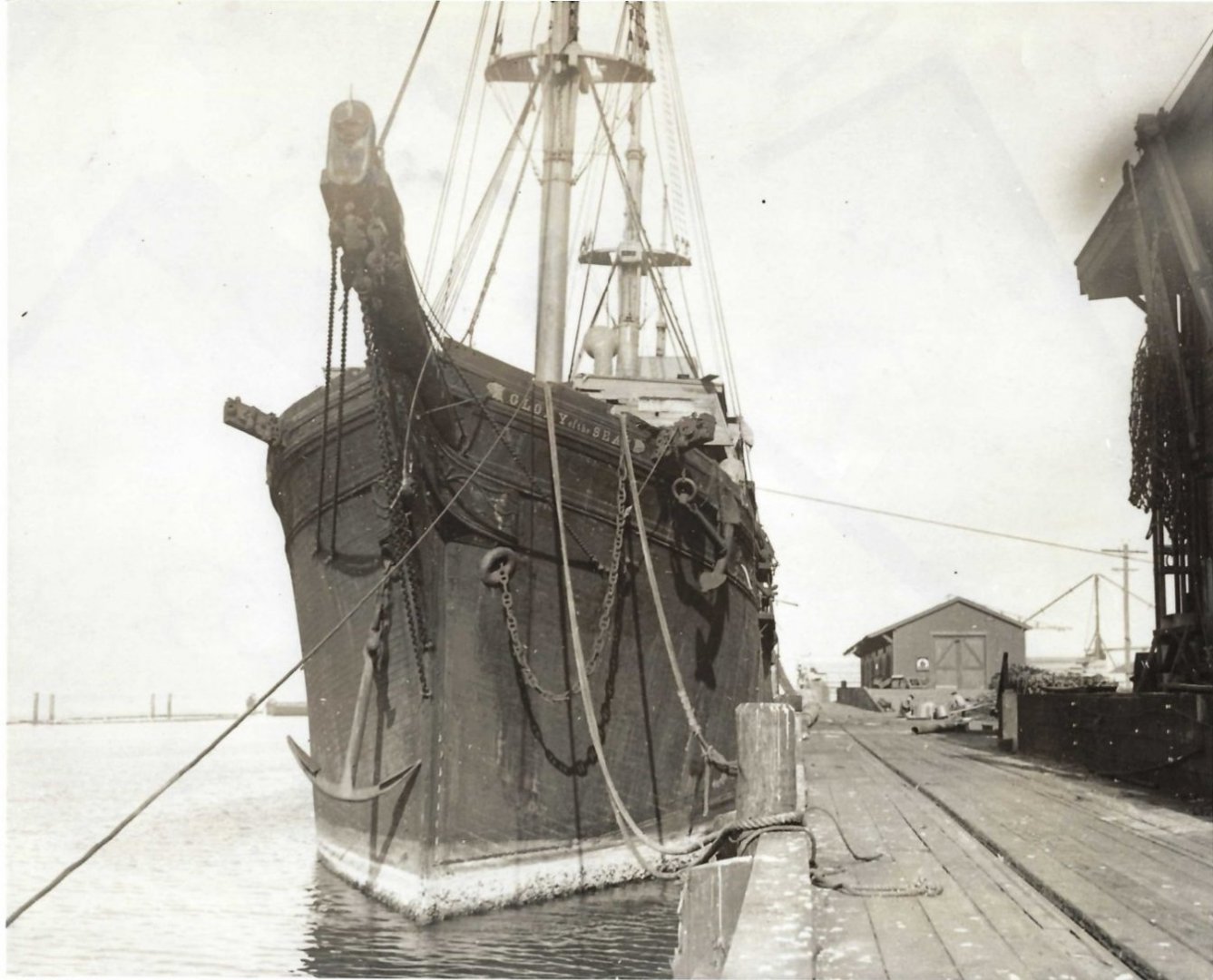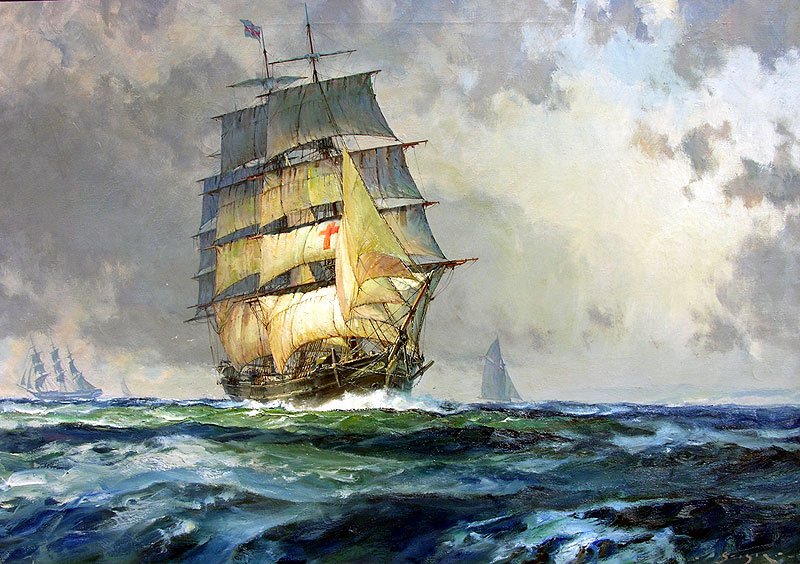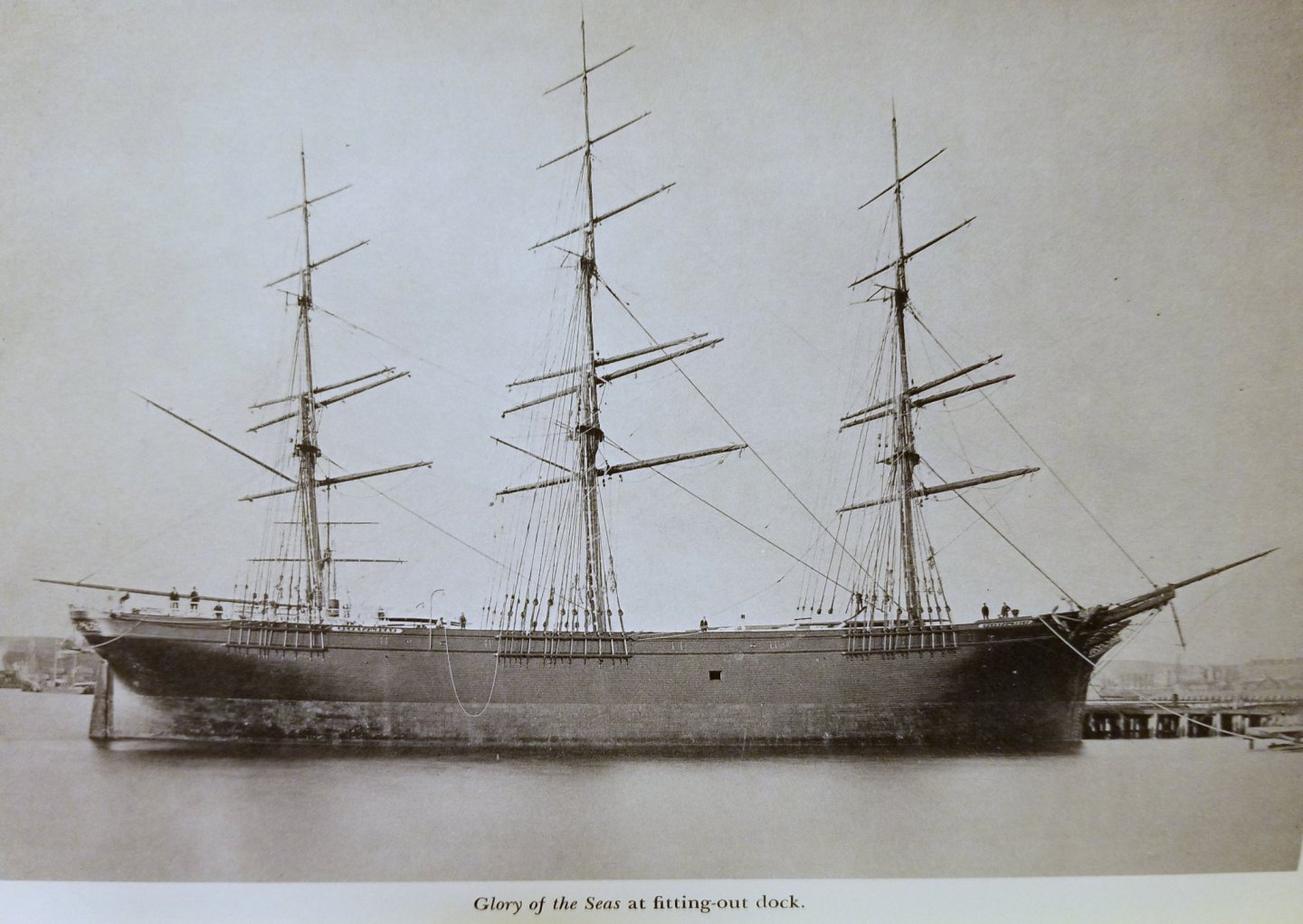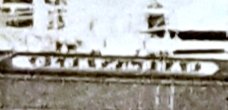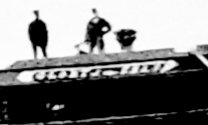-
Posts
2,152 -
Joined
-
Last visited
Content Type
Profiles
Forums
Gallery
Events
Everything posted by ClipperFan
-
Rob, while I understand your reference to artistic license, I don't believe that's what any of us have been doing. Instead, by using multiple photos generously shared by Mike (still ongoing, I might add) and meticulously researching precise dimensions in comparison to the most accurate images we can get, we have been methodically recreating McKay's last, lost Clipper in amazing detail. You probably recognize the name Björn Landström. I draw my inspiration from his incredible marine art reconstructions of ships from contemporary artist's works. I believe that "Glory of the Seas" had a finer entrance and exit than she previously had been given credit for. Even the most recent Bow and Stern views bare that out. I'm glad that Mike is so enthusiastic with our progress. After relentlessly pursuing the most accurate recreation possible for 12 years now, I just want to make sure I don't stop short just before the finish line....
- 3,560 replies
-
- clipper
- hull model
-
(and 2 more)
Tagged with:
-
Vladimir, You're so welcome, my friend. Rob has drawn some incredible talent to his once solo project, to the point where "theauthorsdaughter" noticed his determined progress and inspired her dad Michael Mjelde "the Big Kahuna" himself to get deeply involved in sharing his incredible treasure trove of spectacular photos. Your own computer CAD skills have made a major contribution as well. I am still doggedly determined to get Glory's true Hull form accurate. As we see more clear images of her from multiple viewpoints, including now an image of her Stern which is even sharper than bows of other contemporary sail powered vessels, I feel stronger than ever that we somehow come to a consensus on her true overall hydrodynamic appearance. We're about 95% there, it's just that elusive 5%....
- 3,560 replies
-
- clipper
- hull model
-
(and 2 more)
Tagged with:
-
Rob, As you can see from all the well deserved accolades coming in from fellow modelers, your remarkable miniature carving efforts have been far more successful than you gave yourself credit for. Vladimir is absolutely right too. Even if it's possible to 3D print a meticulously precisely accurate miniature, it actually detracts from recognition of the artistic effort itself. One of the qualities of 17th Century miniaturists I admire most is their amazing carving abilities. For the same reason, I am constantly in awe of Doris and her incredibly lifelike sculptures is know that they're all hand carved from scratch. In conclusion, you have set a mighty high 'bar' my friend. It will be fascinating to see how others take up the challenge in their own creations, including possibly, eventually myself. By the way, to answer your question, yes I did see the photo of Glory's Bow below her nameboard. However it wasn't until after being able to freeze the image did that occur.
- 3,560 replies
-
- clipper
- hull model
-
(and 2 more)
Tagged with:
-
I learned how to access a new feature of my phone. Voila! Screenshots of "Glory of the Seas" nameboard and the Samuel Walters oil which graces the cover of Michael Mjelde's wonderful first book that follows. This should help Vladimir and others see how this beautifully rugged device actually appeared. Of course this in no way compares to Rob's gorgeously realized miniature Athene Figurehead. Compare his work to the one at the Bow of Walter's spectacular oil painting and well, there is no comparison. I am in awe of Rob's results. Believe me after spending years trying to capture her essence, I know how complex and challenging a Figurehead she is.
- 3,560 replies
-
- clipper
- hull model
-
(and 2 more)
Tagged with:
-
Rob, This is amazing. I bet Michael Mjelde as well as his daughter will be blown away by this little gem. Athene is not an easy figure to sculpt and when you consider that you're restricted to under an inch, I'd say your result is extraordinary! Great work! She definitely sets the tone for the rest of your vessel.
- 3,560 replies
-
- clipper
- hull model
-
(and 2 more)
Tagged with:
-
Rob, buddy I have a sneaking suspicion that if we compared maritime libraries, we'd probably match almost entirely. I've had a first edition book of Capt'n Samuel's salty autobiography for years. What I didn't know until just recently was that although his shipyard didn't build her, she's a creation of Donald McKay all the same.
- 3,560 replies
-
- clipper
- hull model
-
(and 2 more)
Tagged with:
-
Rob, sometings I get fanciful. Can you imagine setting up a "go fund me" site to actually build another full sized "Glory of the Seas" for real? I read where there's actually a group 'across the pond' that have a genuine proposal to build a full scale repilica of 'Cutty Sark' and sail her for real as a sail training ship.
- 3,560 replies
-
- clipper
- hull model
-
(and 2 more)
Tagged with:
-
Rob, from what I read in Mike's books, what ultimately doomed poor Glory were two main factors. Her metal cladding hadn't been replaced, so her lower hull was exposed to the dread 'toredo worm' and consequential rot and ironically all the heaving factory processing equipment added extra expense to remove and restore her. All in all, it's just such a damn shame and a pitiful loss. Unfortunately Glory also had to be sacrificed in order to save the USS Constitution. Restorers had enough funds to save one but not both....
- 3,560 replies
-
- clipper
- hull model
-
(and 2 more)
Tagged with:
-
Rob, some more observations from this never before seen image. Immediately I see that her catheads are contained entirely within her monkeyrail, from just above the lower moldings and from what I can see, bisect upper moldings. From best observations, the double monkeyrail moldings are about 3" each, which would make the Catheads 15" high most likely 12" wide. Regardless it's clear the caprail above the monkeyrail runs completely over the catheads. The triple moldings of her Main Bulwarks are well defined too. At the lower end, there's a smaller round molding, followed by a larger one which appears to rest on a wider shelf molding. These devices are repeated in reverse above. Knowing an interior dimension of this bulwark is 5' since exterior moldings bolt to 1' high waterways, sitting on 3" decks, it's actually 15" from 5' which would bring exterior dimension to 3'9". If these exterior moldings, not inclusive of the flat shelves, which aren't as noticeable are 31/2" each, that results in the area between moldings of 3'2". This further clarifies another struggle I've been having trying to reconcile a 5' interior wall when it's actually 3'9". Now it all makes sense and the 3'6" naval hoods will fit in much more harmoniously than they did before.
- 3,560 replies
-
- clipper
- hull model
-
(and 2 more)
Tagged with:
-
Rob, somehow these images of poor old Glory still mainly intact but now shorn of her lovely Figurehead and smart identifying nameboards make her look so forlorn, it's painful to see. How I so wished she could have been saved for all posterity. Can you just imagine the stunning spectacle she would have presented, being docked nearby "Old Ironsides?" Alas! Old Glory, they've done you so wrong. To see your faithful service of over half a Century end as a blazing funeral pyre just to salvage your metal.....
- 3,560 replies
-
- clipper
- hull model
-
(and 2 more)
Tagged with:
-
Rob, please express my gratitude to Mike for his generosity in continuing to share these rare and incredibly sharp images of McKay's last Clipper. Seeing this angle, it's clear her Stern is truly curvilinear. She's almost flat towards the center and rounds towards both ends. I'm also struck by how fine her rear entrance is too. It reminds me of another famous McKay designed but not built by him Clipper Packet. The Newburyport 'Wild Boat of the Atlantic' extreme Packet "Dreadnought" under capable direction of 'Bully' Captain Samuel's once covered 183 nautical miles over 52 hours sailing backwards! He accomplished this amazing feat of seamanship when it became impossible to ship a jury rigged rudder to replace the original taken away in a storm. He refused to leave the damaged vessel when a French Steamship Captain offered to take him for medical care due to a severe compound fracture of his leg. Now seeing the fine Stern run of Clipper "Glory of the Seas" it becomes more understandable how this could have been accomplished.
- 3,560 replies
-
- clipper
- hull model
-
(and 2 more)
Tagged with:
-
Rob, it's wild how any images we get directly from Mike are so hard to get posted upright. This image, when righted reveals how slim and fine the Bow and Entrance of "Glory of the Seas" truly was. Again it reminds me that while she was referred to as a 'Medium Clipper' that was probably due to her near flat half floor for enhanced carrying capacity, still she had a lovely Hull.
- 3,560 replies
-
- clipper
- hull model
-
(and 2 more)
Tagged with:
-
Rob, it's always exciting to hear about your time rubbing elbows with Michael Mjelde, a man who has spent literally a lifetime researching McKay's last Clipper ship and who has a treasure trove of documents. I have to admit, I miss my email conversations with Mike. I suppose it's because he's been very busy with anticipated publication of book #3. By the way, did he give any hint as to when his latest book will become available? I would love to get a personalized autographed version of his latest book. Did he mention if the Stern moldings he has drawings of include the fancy scrollwork that was originally on Glory? For that matter, do you know if he has similar sketches of her original carvings on her Naval Hoods and curved arches on her Cutwater? As for her 14' nameboard (you were very close at 13' probably the curve made it look shorter) did Mike confirm a height of 1'? It probably can't be much more, maybe 14" if the moldings are 2" apiece, since the monkeyrail height's been established as 18". As for the 2 oak leaf end carvings, if those were 2' each, that would leave 10' to fit in her name. Does that sound accurate to you? I will focus on getting the most accurate sketch of her Figurehead and nameboard and post images in the next few days. Another observation I've made is that the long flowing gown that Athene grasps in her upswept right hand is actually very tightly carved so that it takes up a relatively small area behind her. Different photographic angles make it look much wider than it really is. If Mike shares any more pics of her Figurehead, especially from straight ahead, that would be very helpful.
- 3,560 replies
-
- clipper
- hull model
-
(and 2 more)
Tagged with:
-
Rob, 13' it is then. How about height? Do you agree that 1' high makes sense? My estimate is based on it fitting neatly in the space between upper and lower moldings, which would most likely set up the capital letters being 10" high. I will recreate the name board based on your 13' spec from oak leaf tip to tip and share it here when done. At 1:96th scale my estimate is it would be 1& 5/8ths" long × 1/8th" tall & at 1:72nds it will be 2&1/6th" long x 1/6th" tall. Feel free to revise my dimensions, if they're inaccurate.
- 3,560 replies
-
- clipper
- hull model
-
(and 2 more)
Tagged with:
-
Rob, First, I hope you get more pics of you and Michael Mjelde together. To say I'm 'green with envy' is the understatement of the decade! If he has any more Glory images to share, that would be so thrilling. He said he has some photos of her Goddess 'Athene' from India House. As for Glory's sign board, since the height of the monkeyrail is 18" when you account for both upper and lower moldings, it looks like the height at most is a foot. That would mean capital letters are 10" high, most likely 4" wide, with exception of "Y" & "A" which are probably 5". If you assign "3" to spaces between letters and 7" to beginning and end spaces, then it's just accounting for 2 lower case words. Comparing the area they take up about 18". 7 capital letters 4" wide equal 28" + 2 capital letters 5" wide add another 10" for 38", then 9 spaces of 3" each add 27" + 2 end spaces each 7" equal 41", all totaled that equals 97" or 8'1", if you figure each oak leaf end caps are 18", that gives 36". So I come up with 11'1". Of course, it makes more sense that these big signs were even dimensions, so 11' makes more sense. However, if you have another way of comparing the dimension that clarifies 13' (my rough sketch could have spaces too close in certain areas) then I suppose it could easily be 13' long.
- 3,560 replies
-
- clipper
- hull model
-
(and 2 more)
Tagged with:
-
Bob Cleek, At the end of this video, there's this email: SAFR_Maritime_Library@nps.gov My attempt to contact them resulted in a rejection stating my email address wasn't a recognized one. I was trying to see if it was possible to get prints of the name board and Samuel Walter's oil painting following. If possible I was also asking associated costs involved. Since you have access to this previously unseen video, by any chance do you have approved access to send my request?
- 3,560 replies
-
- clipper
- hull model
-
(and 2 more)
Tagged with:
-
Rob, very clever. I'm rapidly becoming a fan of your creativity. My guess is you need tin snips in order to cut these.
- 3,560 replies
-
- clipper
- hull model
-
(and 2 more)
Tagged with:
-
Vladimir, Yes, definitely digitize this. There's conflicting techniques demonstrated in production of these name boards. Viewing the video on pause, letters "G" & "O" have 7 & 8 straight lines which comprise the main characters. Meanwhile letters "R" & "S" have actual smooth curves. File it under 'go figure' I guess. I also noticed that the name board consists of two layers. The sculpted oak leaves actually fold up gracefully and are on a lower level than the curved name board itself, which has letters carved into it. If you know anyone who does 3D printing, that would be perfect.
- 3,560 replies
-
- clipper
- hull model
-
(and 2 more)
Tagged with:
-
Bob Cleek, Rob & Vladimir It took the better part of the afternoon, running and pausing the video more times than I can remember. Anyhow, here's my sketch of the name board for McKay's last Clipper "Glory of the Seas."
- 3,560 replies
-
- clipper
- hull model
-
(and 2 more)
Tagged with:
-
Rob, that explains why Glory's name boards appeared to be so well preserved. I remember reading that the "David Crockett" had her figurehead's rifle removed when out to sea and "Thermopylae" had King Leonidas's sword taken out as well. I don't recall entire Figureheads being taken down but I suppose it's possible. There's a tale of the British Clipper "Torrens" losing her lovely lady Figurehead being lost in a dramatic collision with a Steam Ship. Three years later she reappeared thousands of miles away in a rugged island near the Antarctic!
- 3,560 replies
-
- clipper
- hull model
-
(and 2 more)
Tagged with:
-
Bob Cleek, Thank you so much! It's always so thrilling to see actual items from McKay's long lost last Clipper! Seeing the genuine signboard from her, I am struck by the rough hewn simplicity and "woodeness" of her capital letters, although the "R" and "S" seem to be smoother than the "G" which looks the crudest of all. In fact, the "of the" lower case words are far more refined in appearance. Even still, it must have been quite an impression to see this in it's original gold leaf glory. Reviewing her 1869 photo, I noticed her "oak leaf" end clusters appear to have been completely gold leafed too. At launch, her Bow signboards were positioned further back, aligning with the graceful termination of the quarterdeck caprail just above.
- 3,560 replies
-
- clipper
- hull model
-
(and 2 more)
Tagged with:
-
Rob, has it already been a year? It seems like yesterday when we started. Besides, at the blistering construction pace that you usually proceed with your builds, I'd lay even money you'll be done with your "Glory of the Seas" before Keith Black even sees another Birthday!
- 3,560 replies
-
- clipper
- hull model
-
(and 2 more)
Tagged with:
-
Keith, "May you be dearly departed in Heaven with God, a half an hour before the devil knows your gone!" an old Irish joke
- 3,560 replies
-
- clipper
- hull model
-
(and 2 more)
Tagged with:
-
Keith, where you planning to go? Inquiring minds want to know!
- 3,560 replies
-
- clipper
- hull model
-
(and 2 more)
Tagged with:
About us
Modelshipworld - Advancing Ship Modeling through Research
SSL Secured
Your security is important for us so this Website is SSL-Secured
NRG Mailing Address
Nautical Research Guild
237 South Lincoln Street
Westmont IL, 60559-1917
Model Ship World ® and the MSW logo are Registered Trademarks, and belong to the Nautical Research Guild (United States Patent and Trademark Office: No. 6,929,264 & No. 6,929,274, registered Dec. 20, 2022)
Helpful Links
About the NRG
If you enjoy building ship models that are historically accurate as well as beautiful, then The Nautical Research Guild (NRG) is just right for you.
The Guild is a non-profit educational organization whose mission is to “Advance Ship Modeling Through Research”. We provide support to our members in their efforts to raise the quality of their model ships.
The Nautical Research Guild has published our world-renowned quarterly magazine, The Nautical Research Journal, since 1955. The pages of the Journal are full of articles by accomplished ship modelers who show you how they create those exquisite details on their models, and by maritime historians who show you the correct details to build. The Journal is available in both print and digital editions. Go to the NRG web site (www.thenrg.org) to download a complimentary digital copy of the Journal. The NRG also publishes plan sets, books and compilations of back issues of the Journal and the former Ships in Scale and Model Ship Builder magazines.

